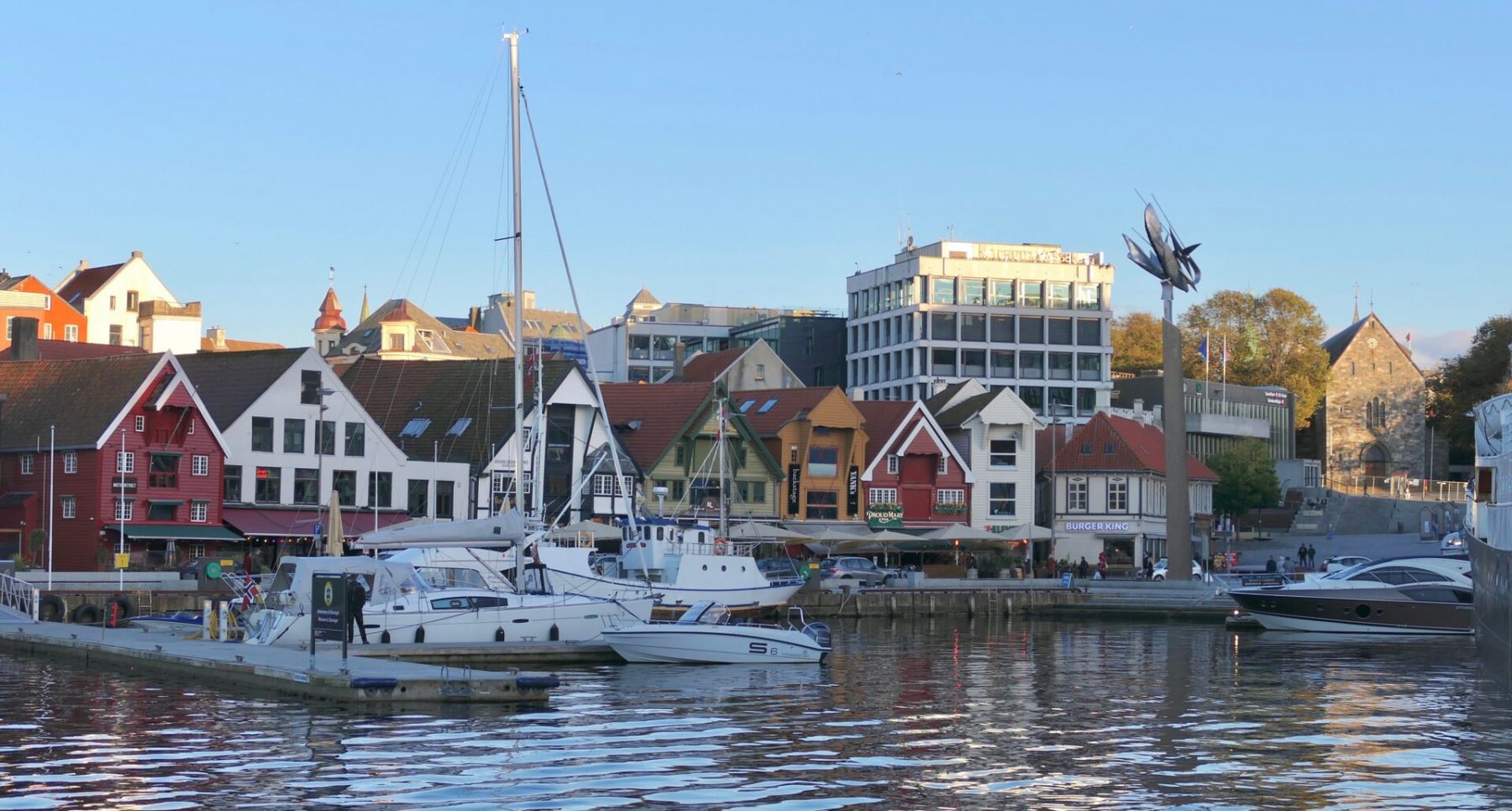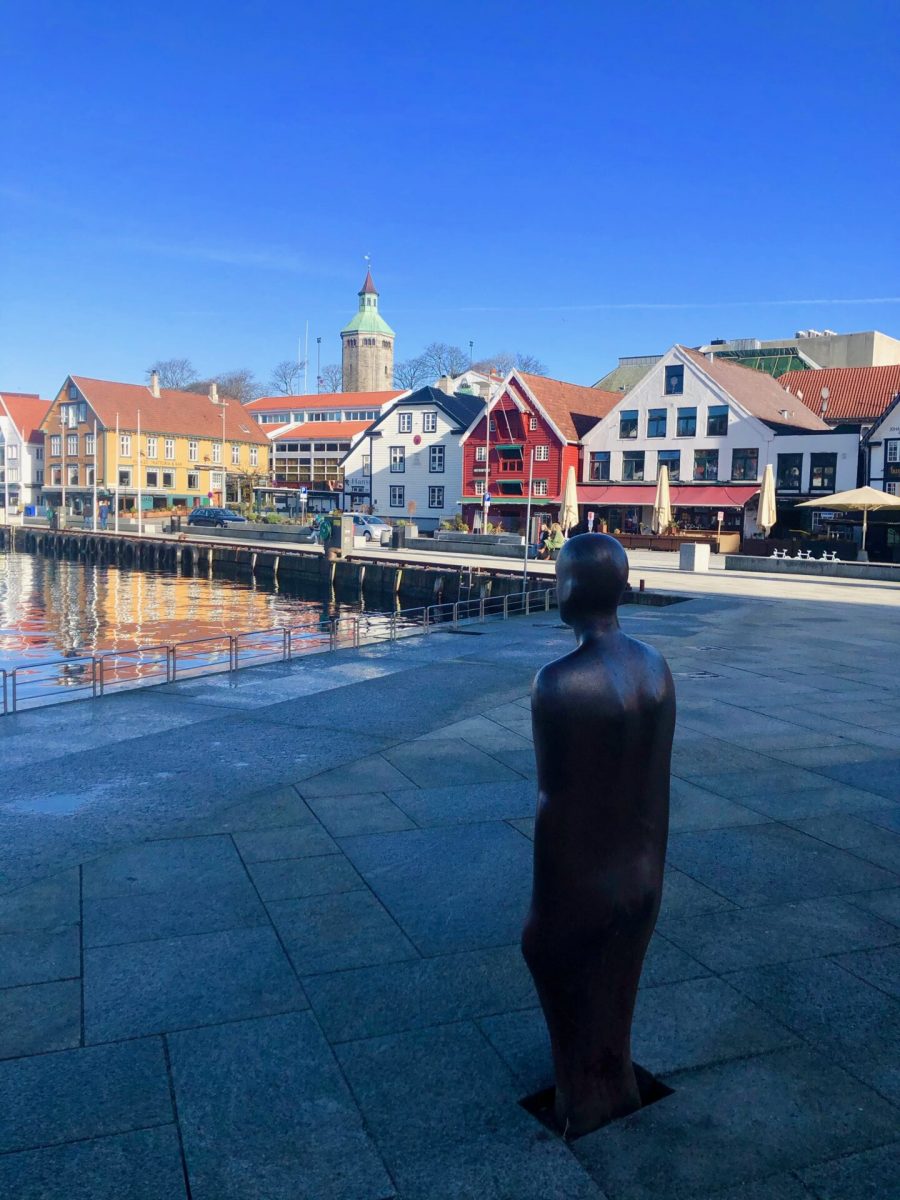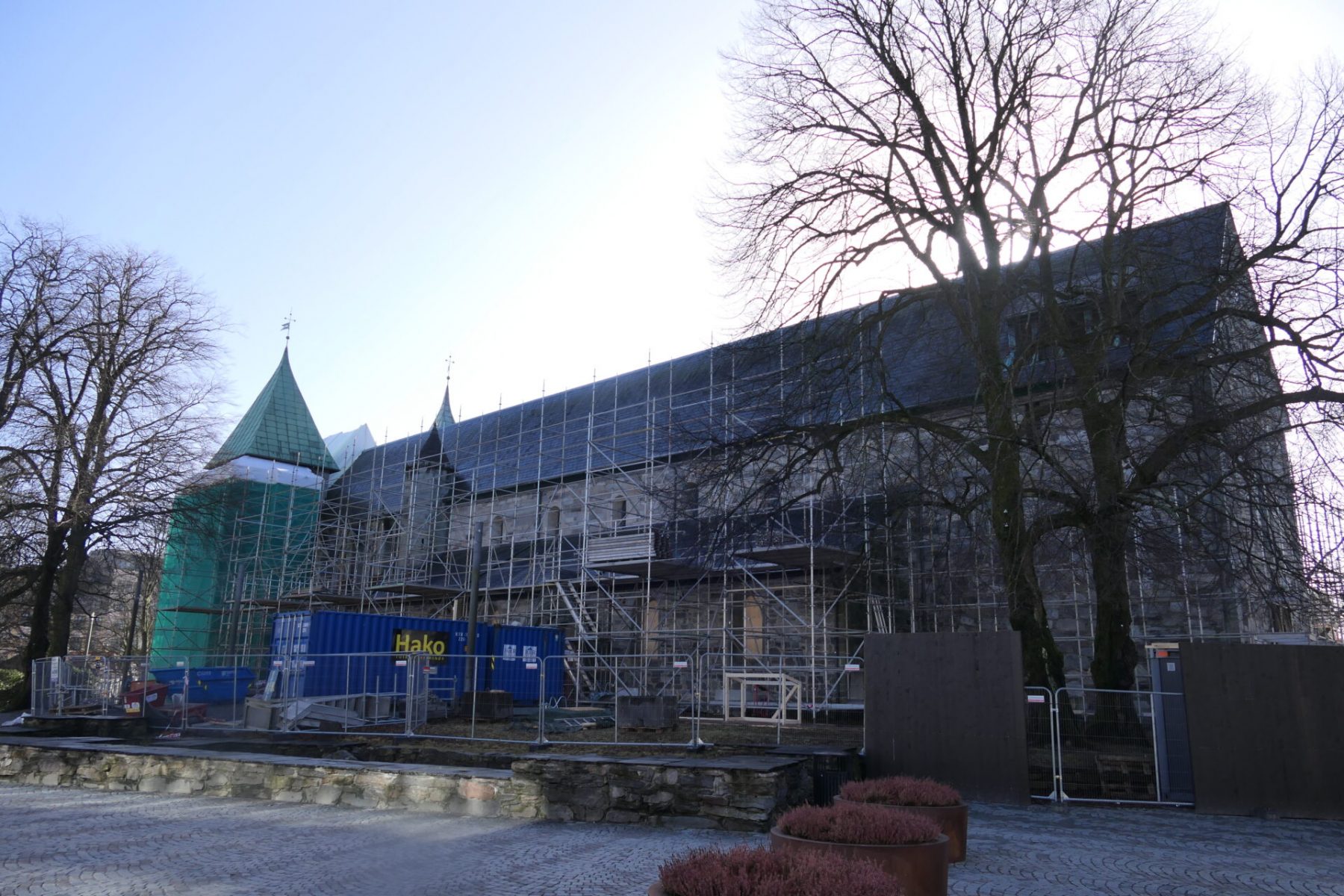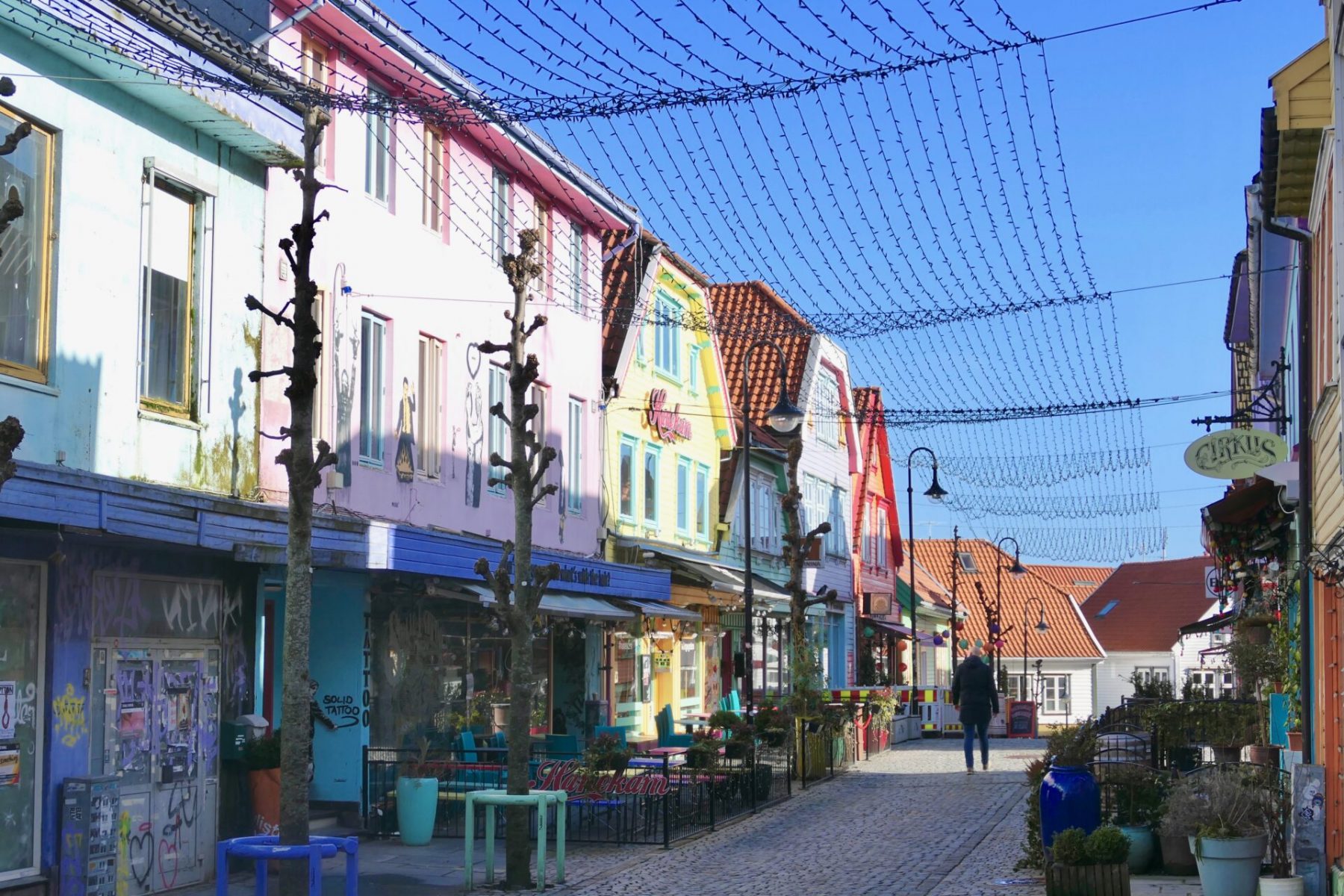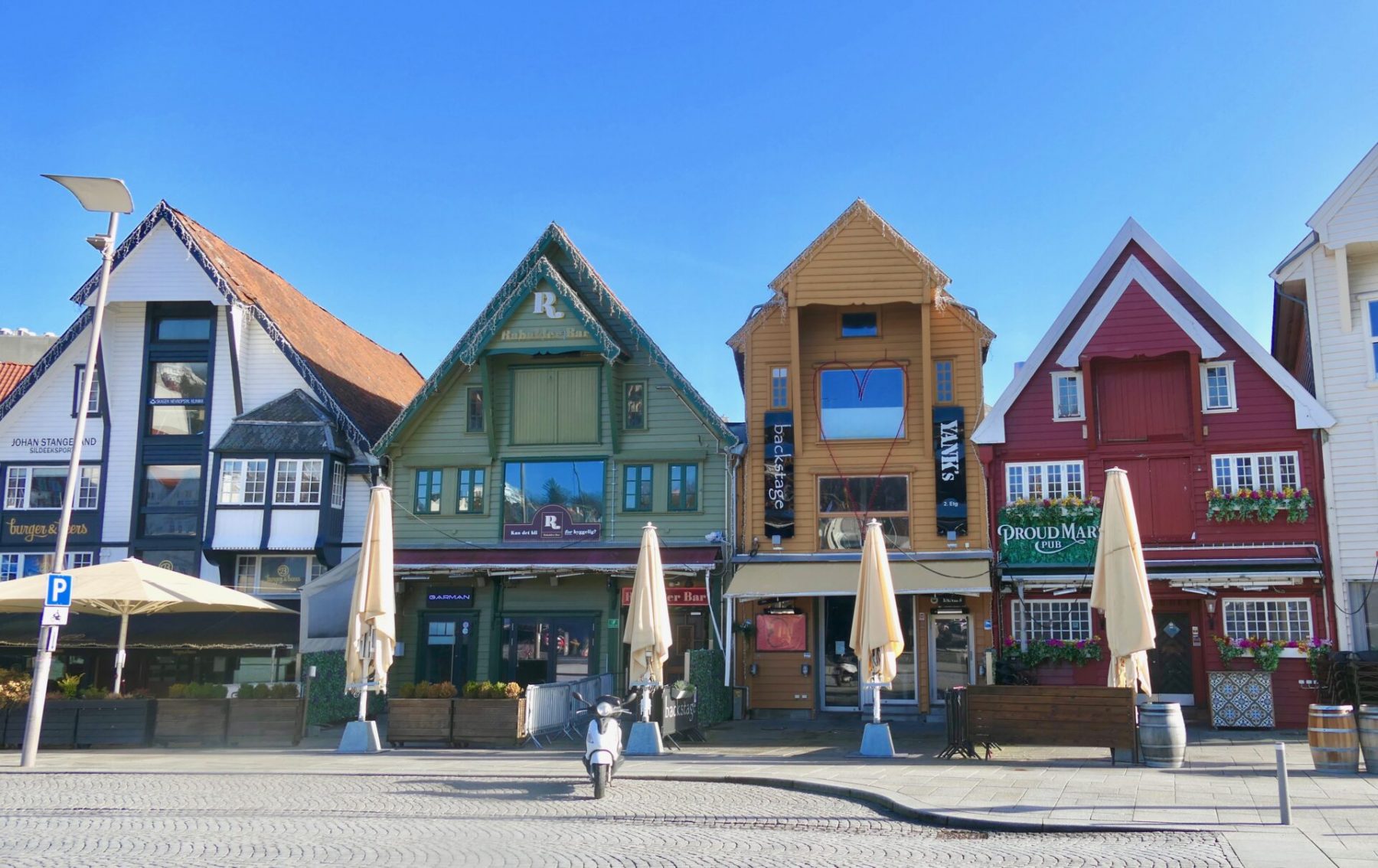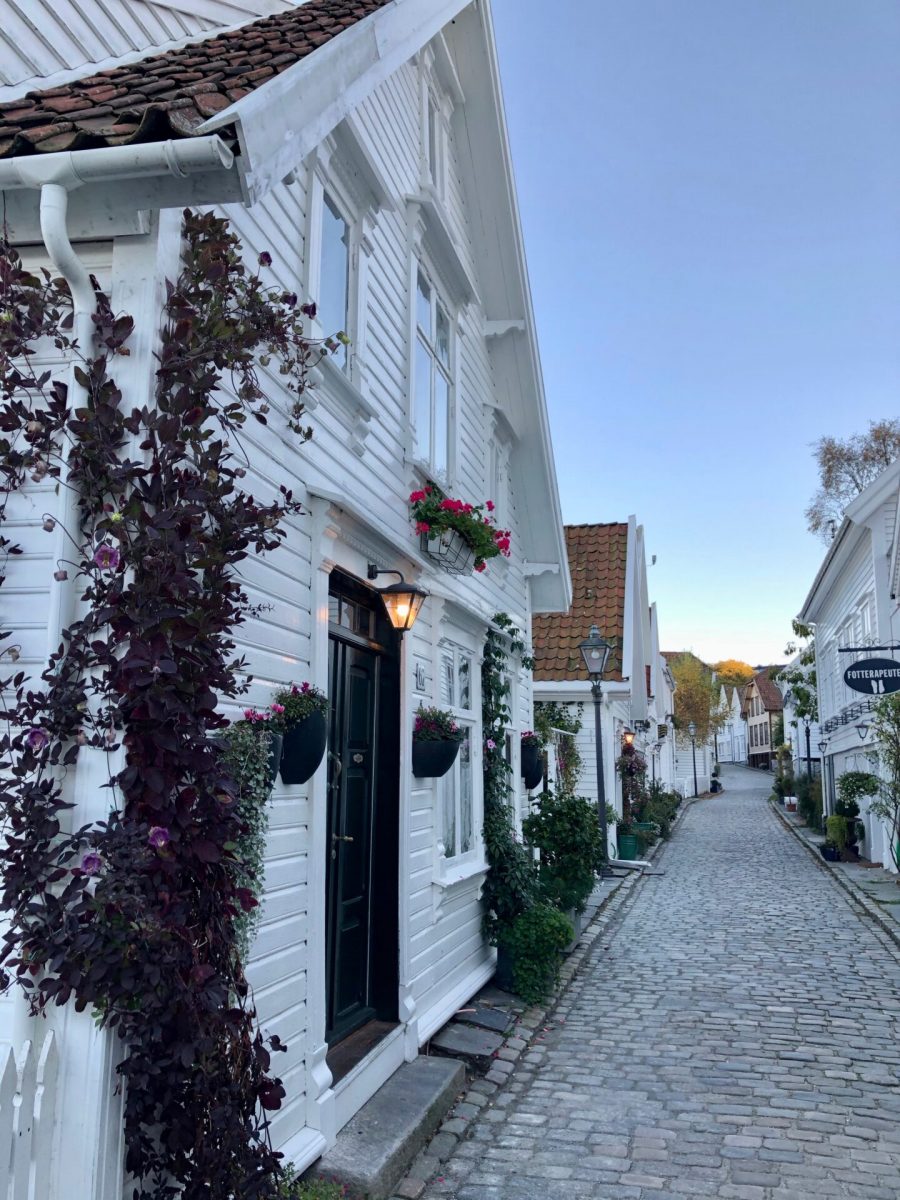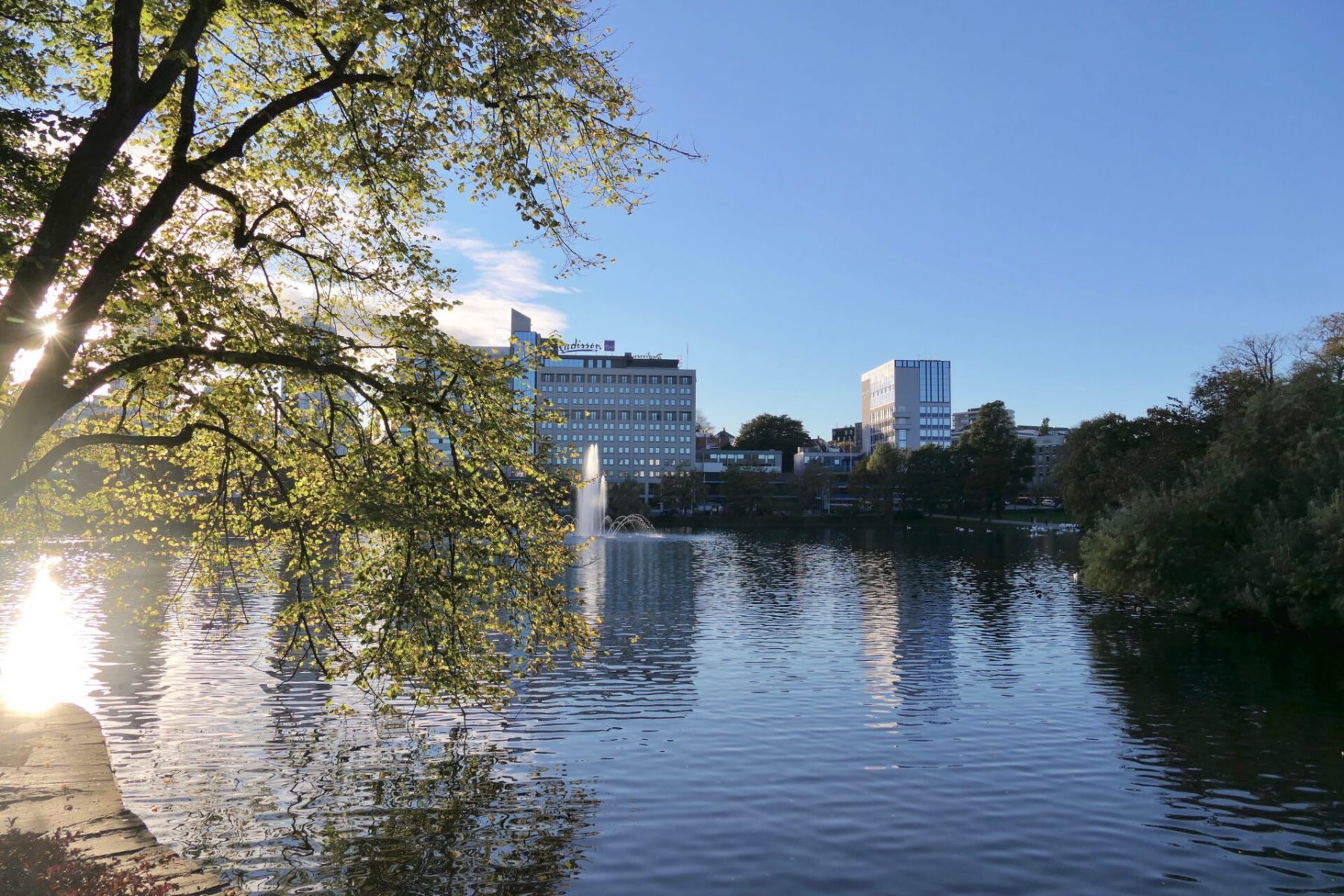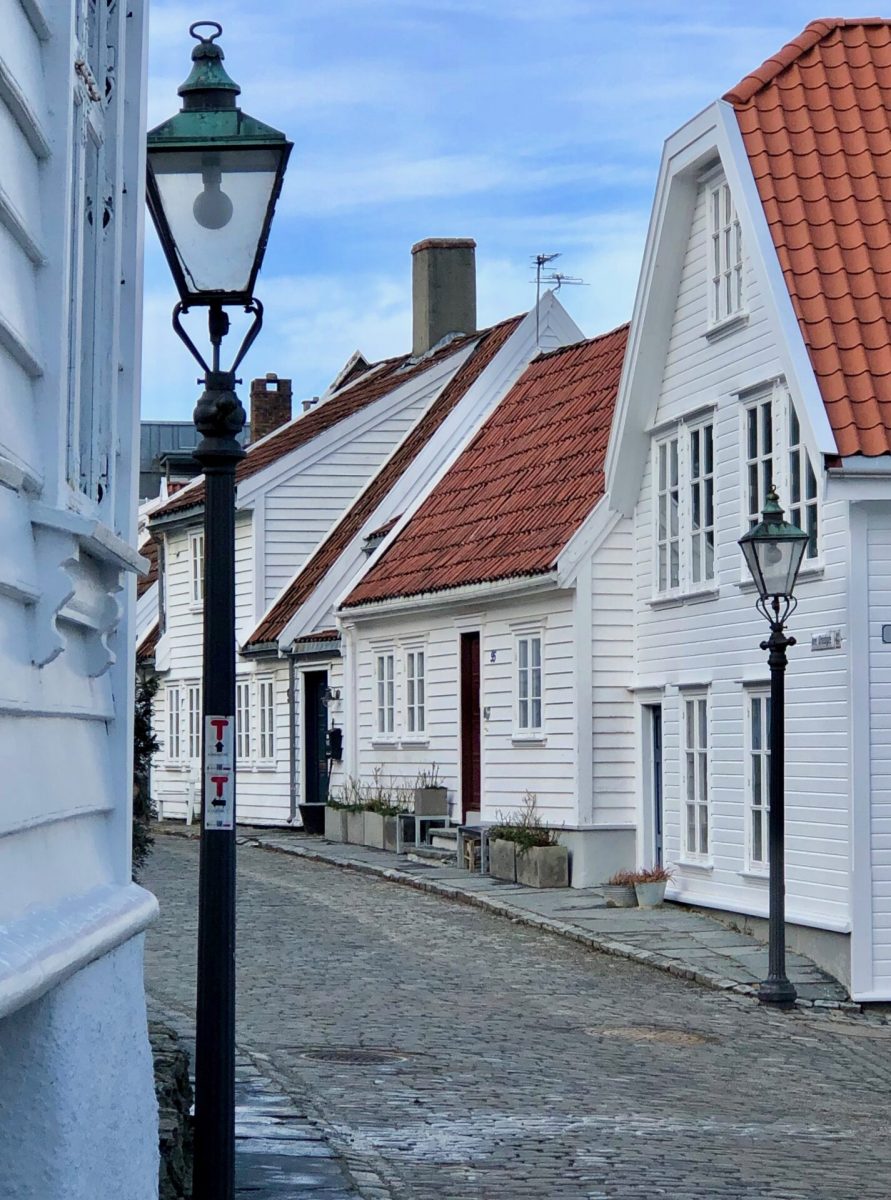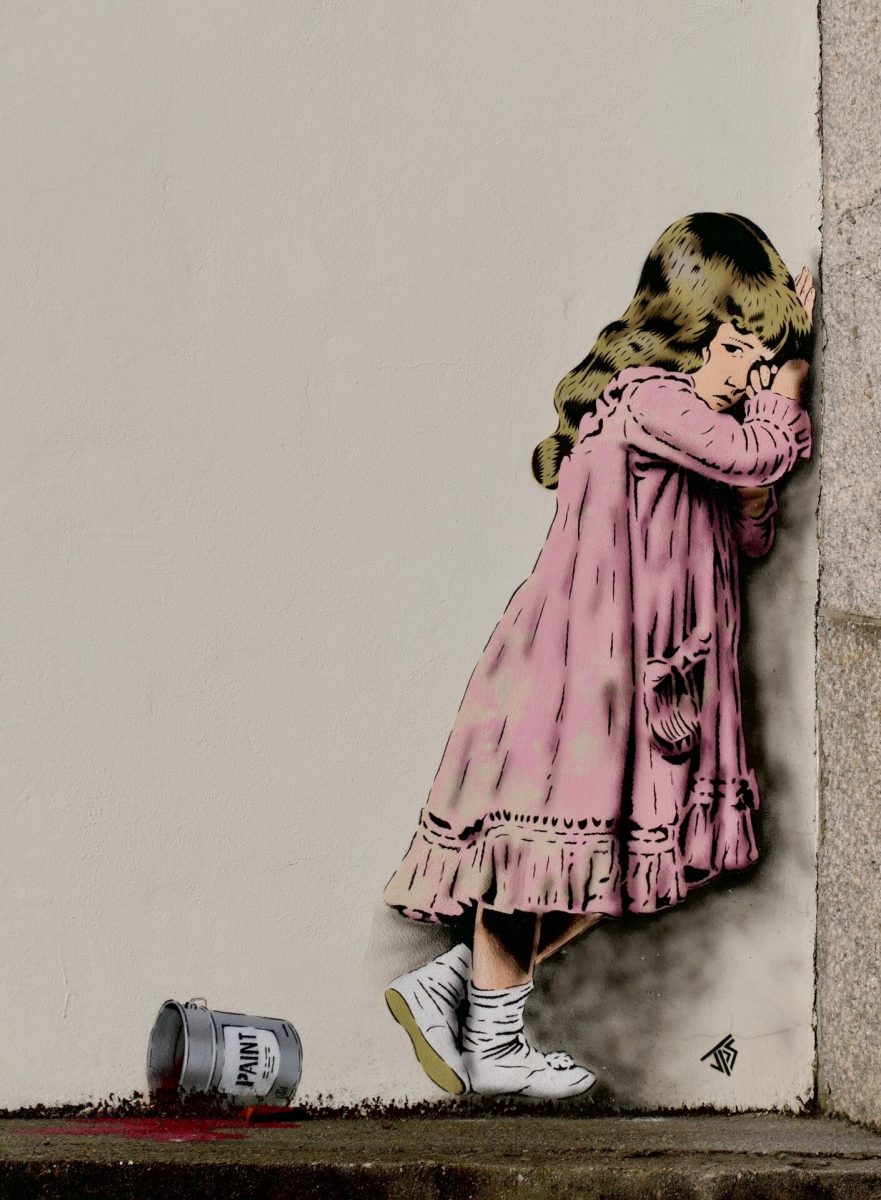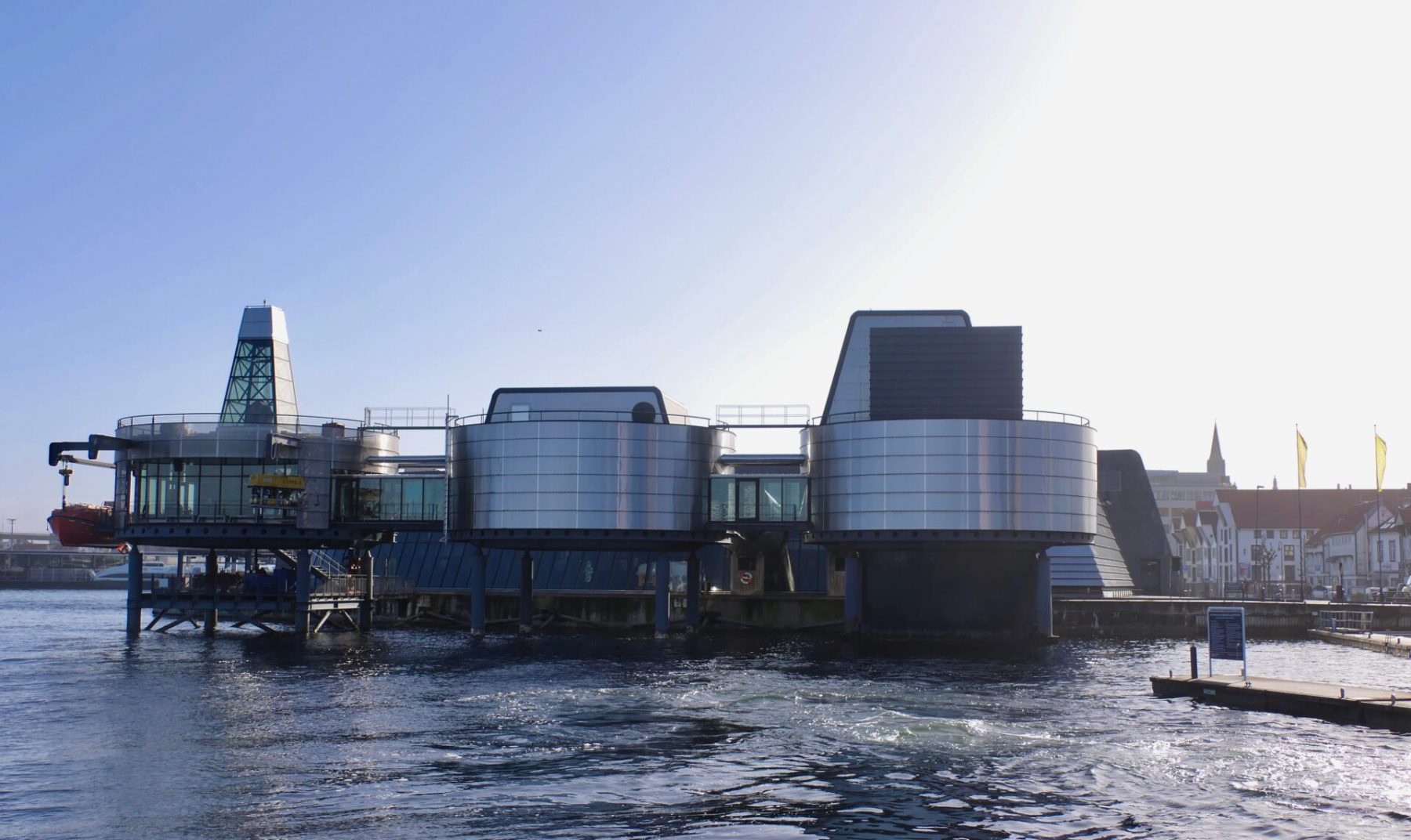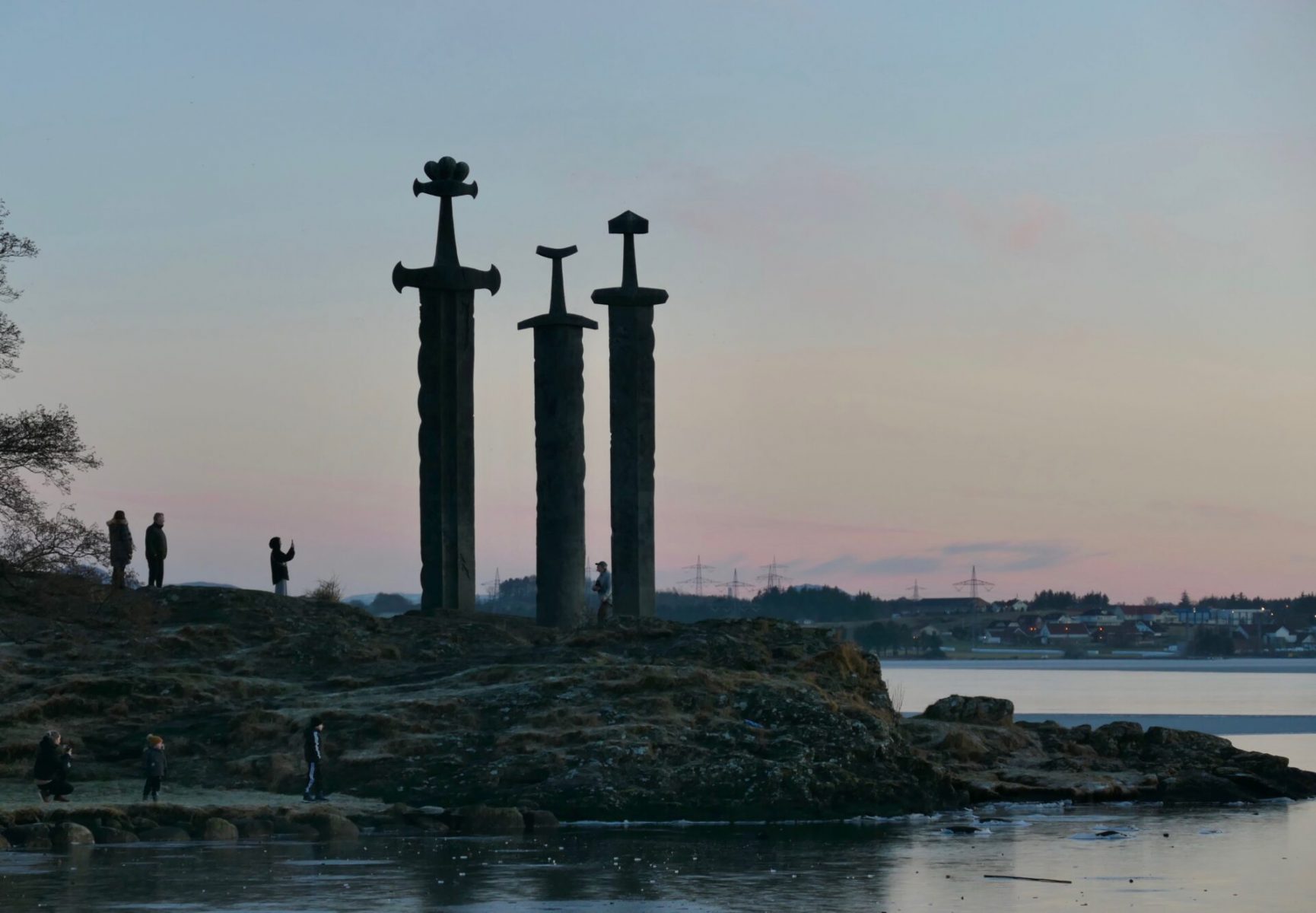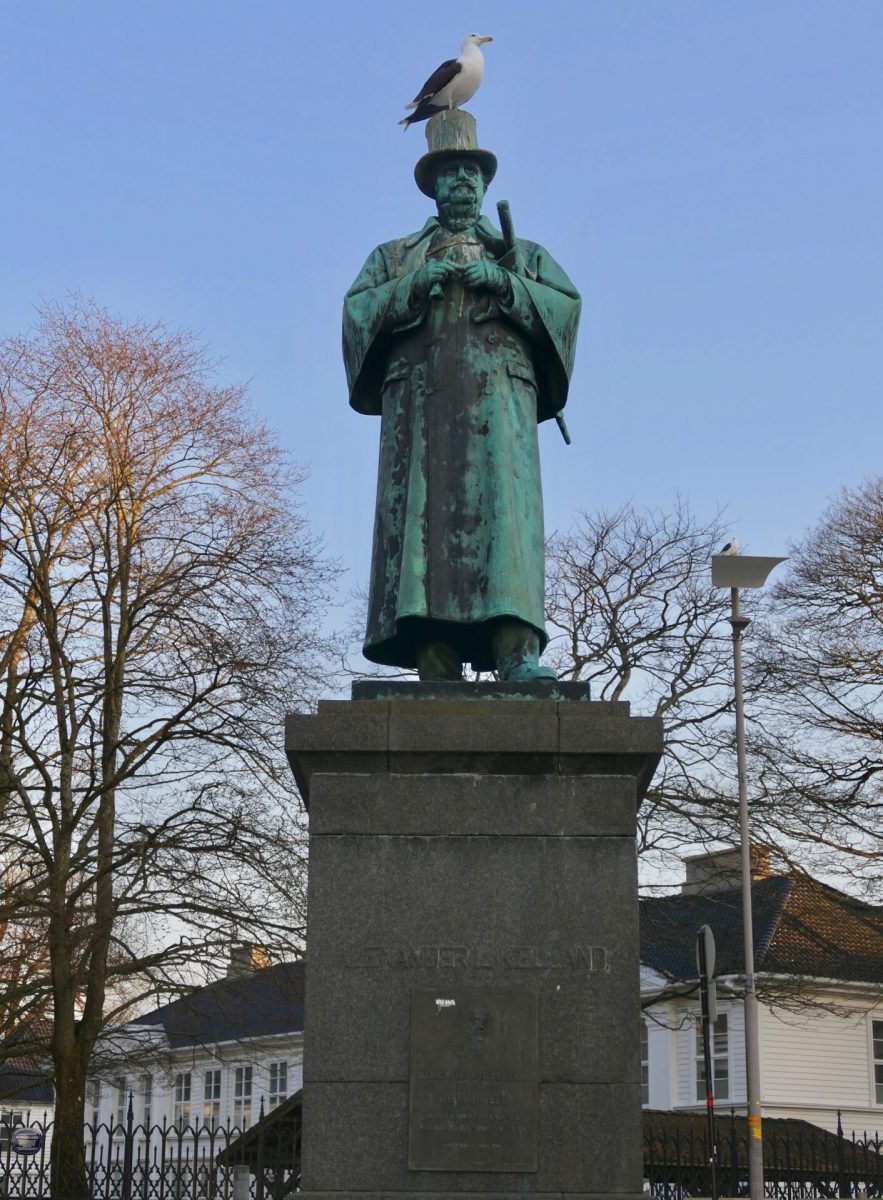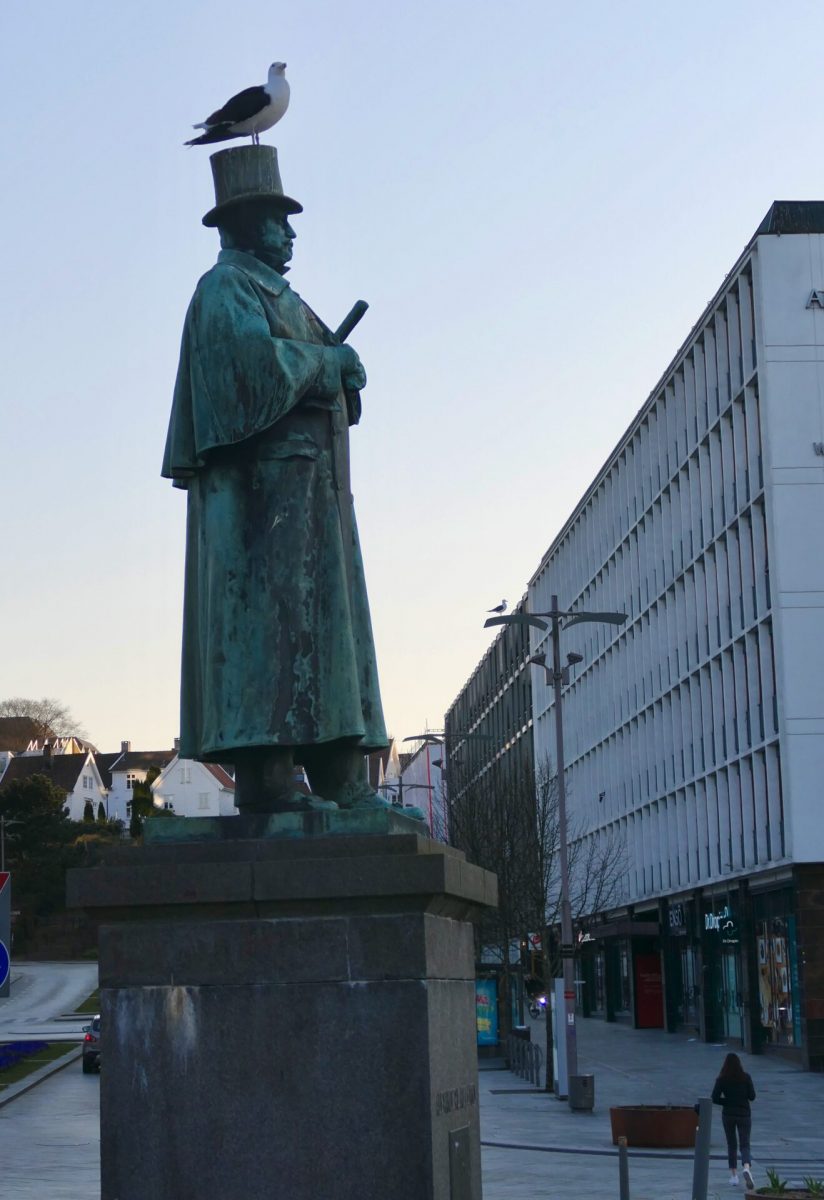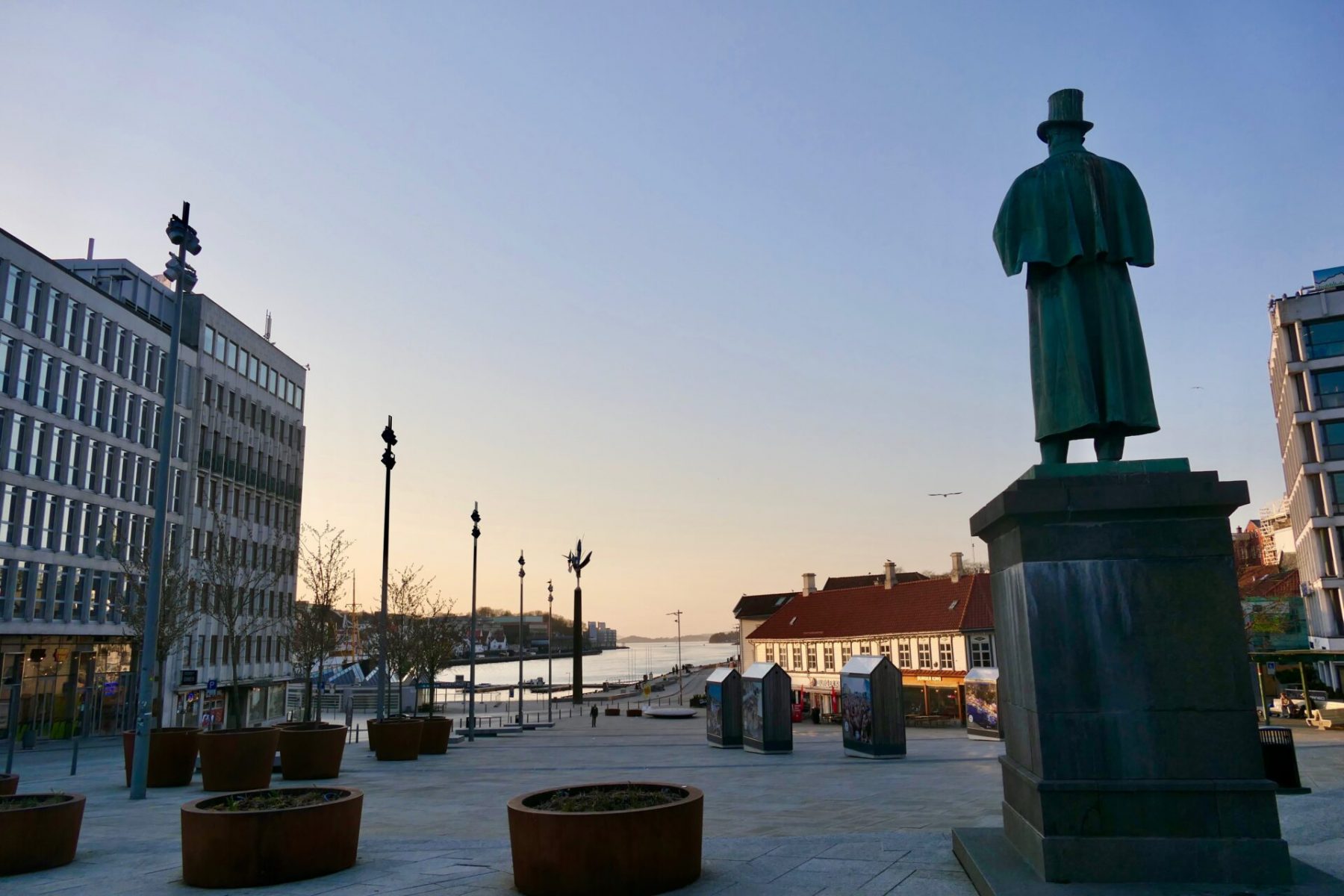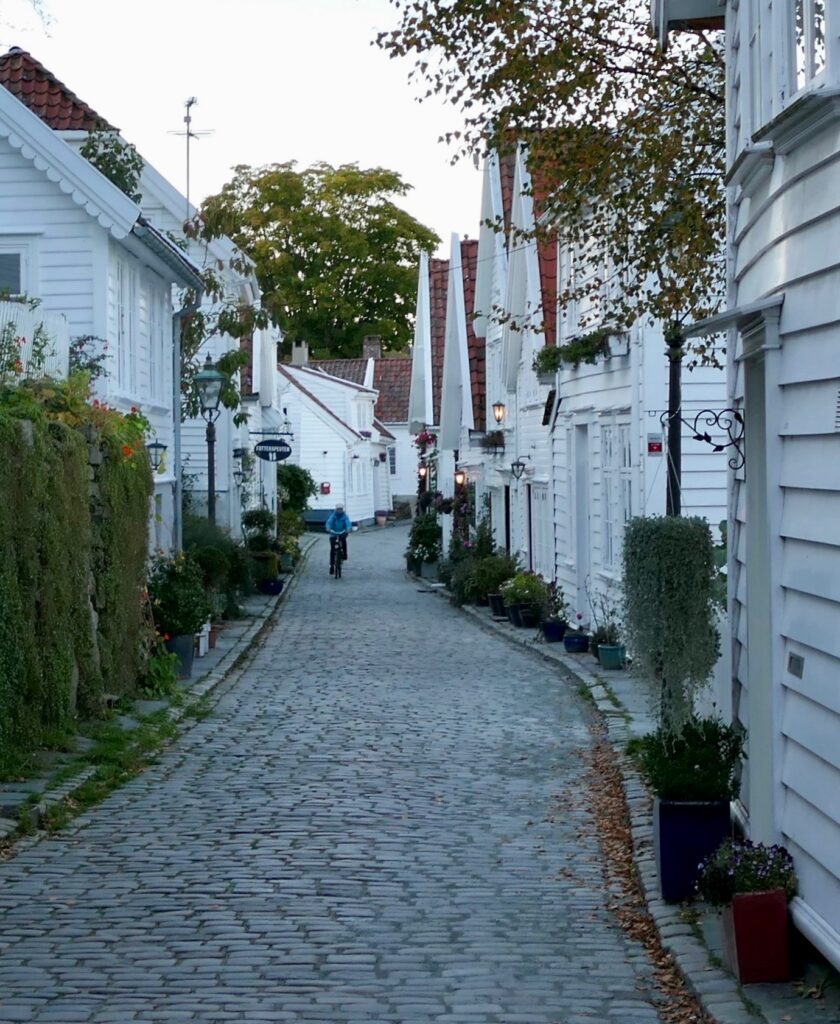
Welcome to my hometown Stavanger – the fourth biggest – and one of the oldest cities in Norway!
Stavanger is located on the Southwest coast and has a fascinating history. From the Viking Age – until now as an international city – widely referred to as the Oil Capital of Norway.
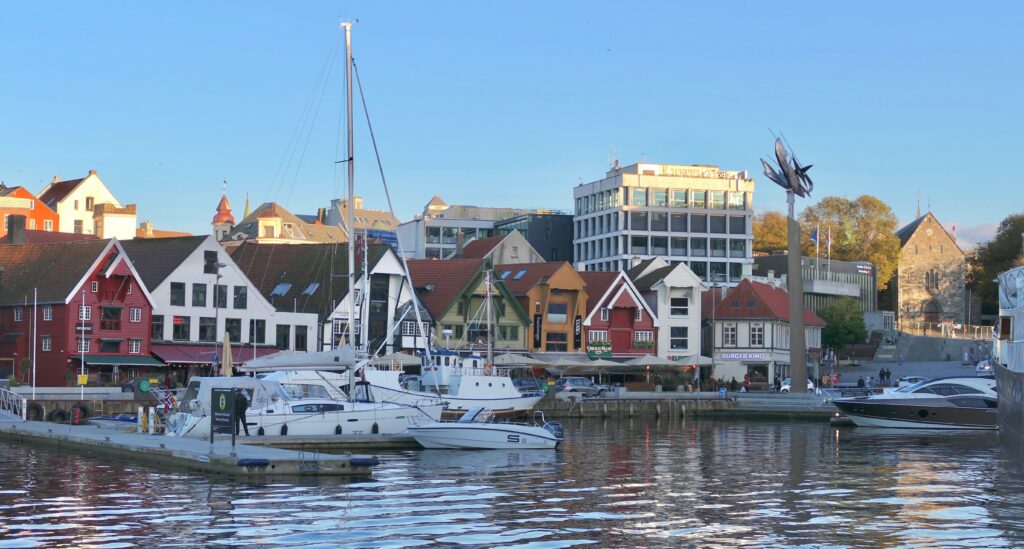
HISTORY OF STAVANGER
According to historians – Stavanger was founded around 1125, the same time as the bishopric was established and the Stavanger Cathedral was built.
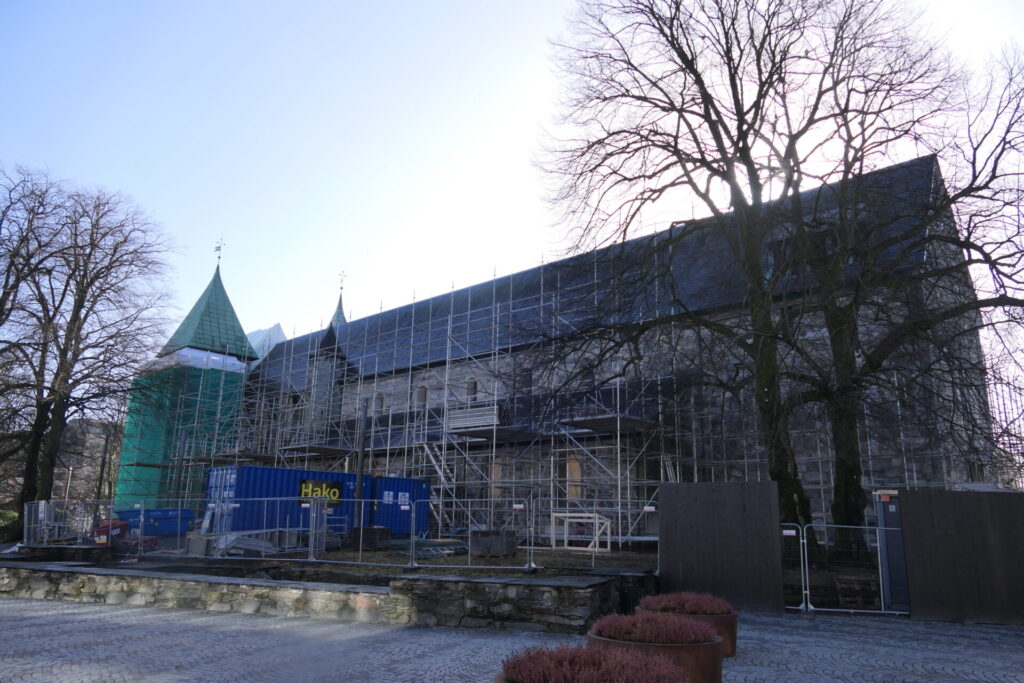
About two hundred years before the founding of Stavanger – another historic event took place at Hafrsfjord near Stavanger. The Battle of Hafrsfjord was fought some time between 872 and 900 and resulted in the unification of Norway. The Viking chief Harald Fairhair (King Harald I) was the victor in the battle and he declared himself as the first king of Norway. He brought many separate kingdoms together under his monarchy. At Hafrsfjord the monument “Sverd i fjell”(Swords in rock) was erected in 1983 to commemorate this battle.
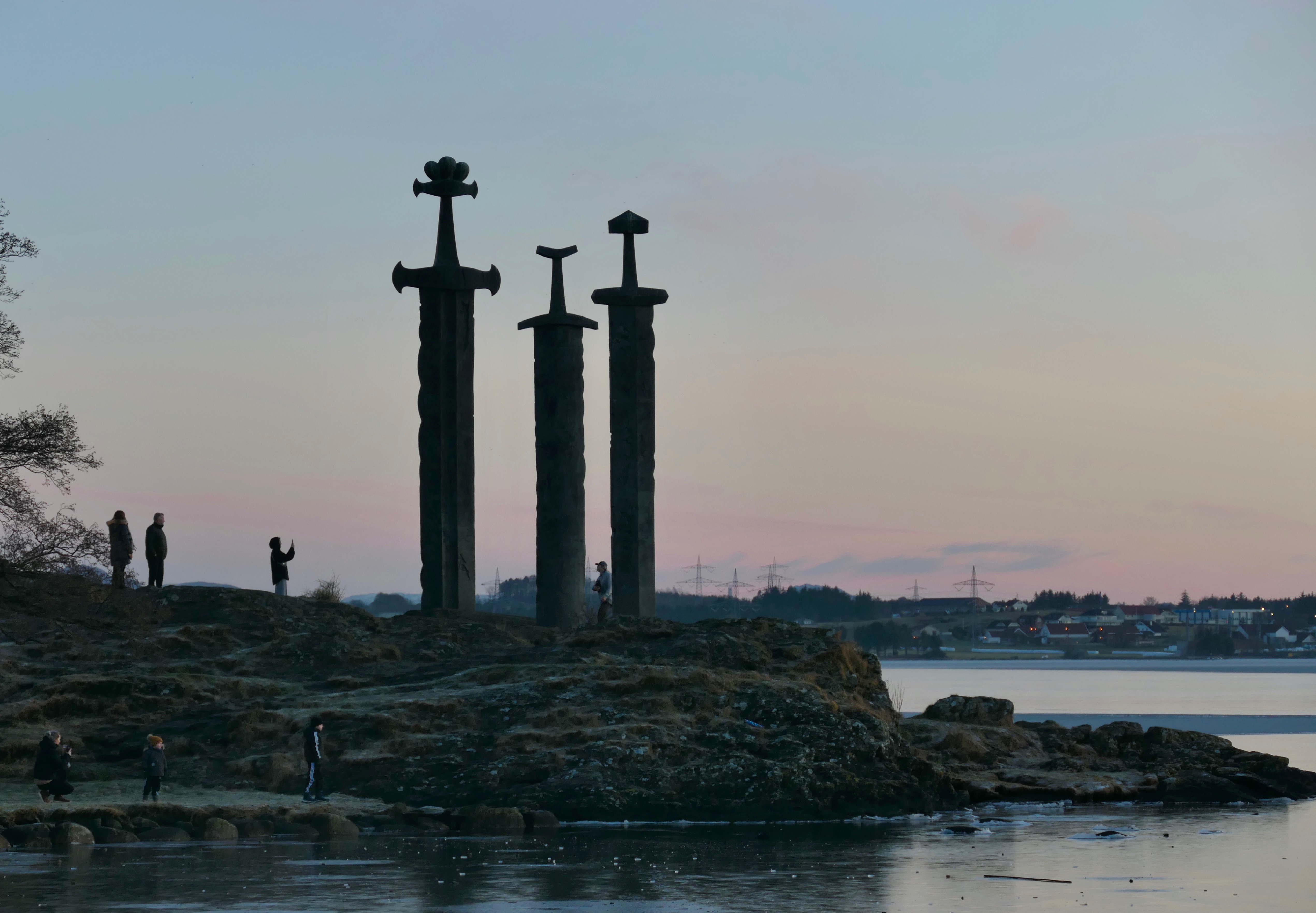
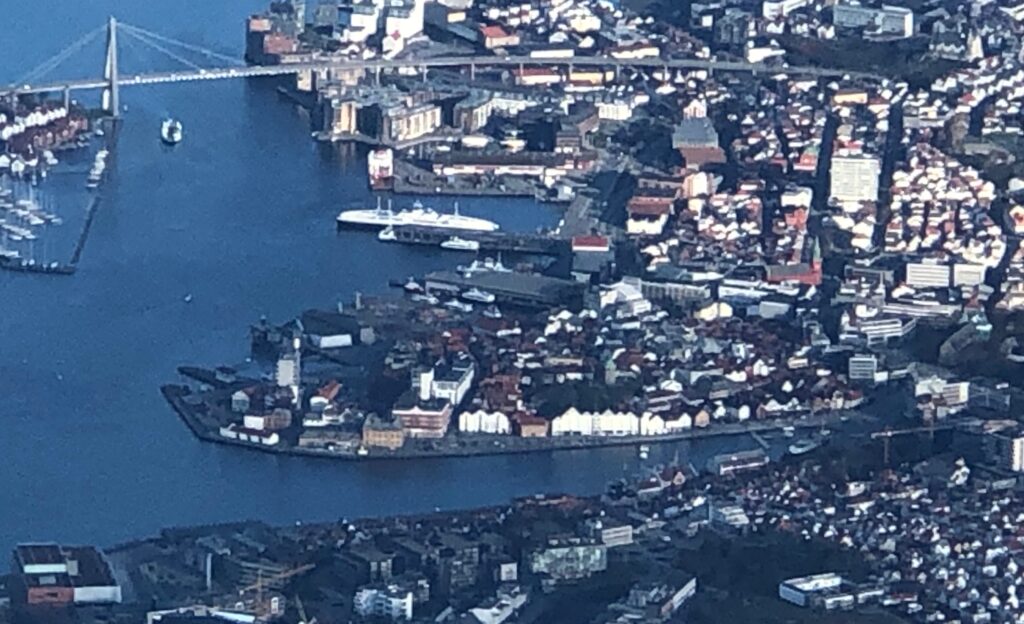
Stavanger is built around a natural harbour and the sea has played an important role for the city over the years. Once a tranquil coastal market town and then later an important fishing port.
Maritime routes were the channels for trade and external influences. In the 19th century, the town blossomed as a centre for the herring fishery and sailing ships. From 1900, canning and later shipbuilding took over as its principal industries. But the canning sector was in decline by the beginning of the 1960s, and Stavanger needed a new economic foundation. That was just when the hunt for oil in the North Sea began. The discovery of oil in 1969 changed the city forever. When the first crude began to be produced in 1971 the city stood ready to take on the role of Norway’s “oil capital”. It has had the highest density of oil workers in Norway ever since.
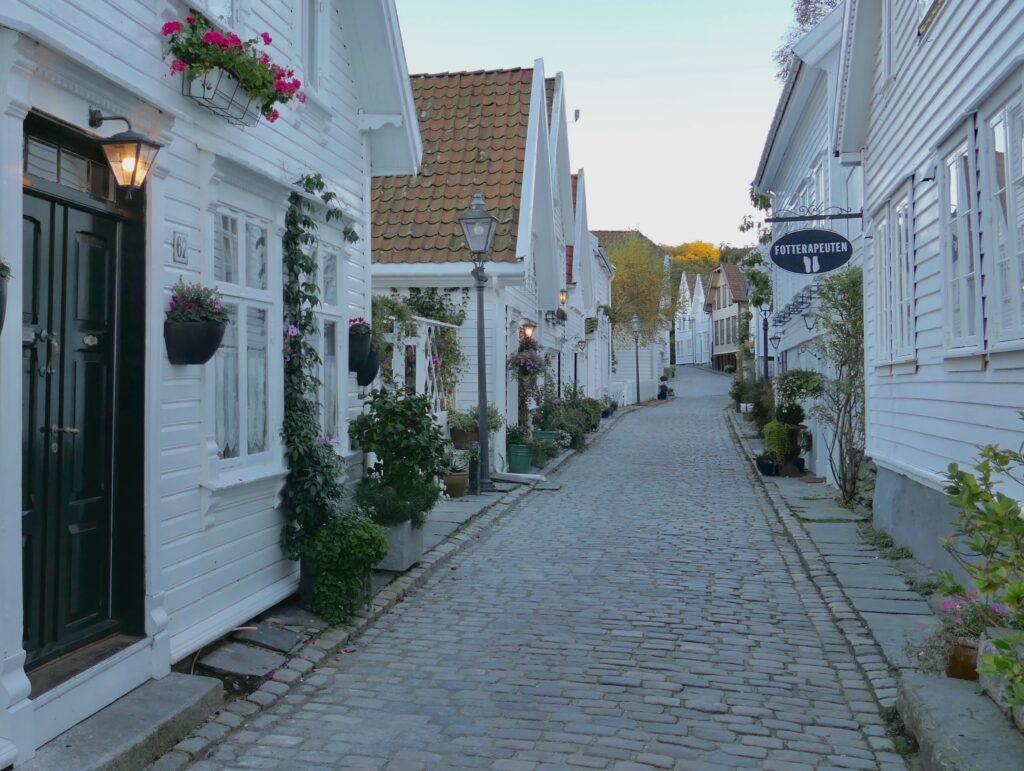
Stavanger has Northern Europe’s best-preserved area of wooden houses and the area “Old Stavanger” is considered the city’s most important tourist attraction next to the Cathedral.
Old Stavanger is however not the only area consisting of wooden houses. The “wooden city” of Stavanger entails around 8 000 houses in the town centre, built before 1954. They are in several different styles – from empire to Art Nouveau and functionalism.
CITY CENTRE
The city centre is full of old wooden houses and cobblestone streets.
It feels more like a small town as there are hardly any tall buildings or intrusive modern architecture.
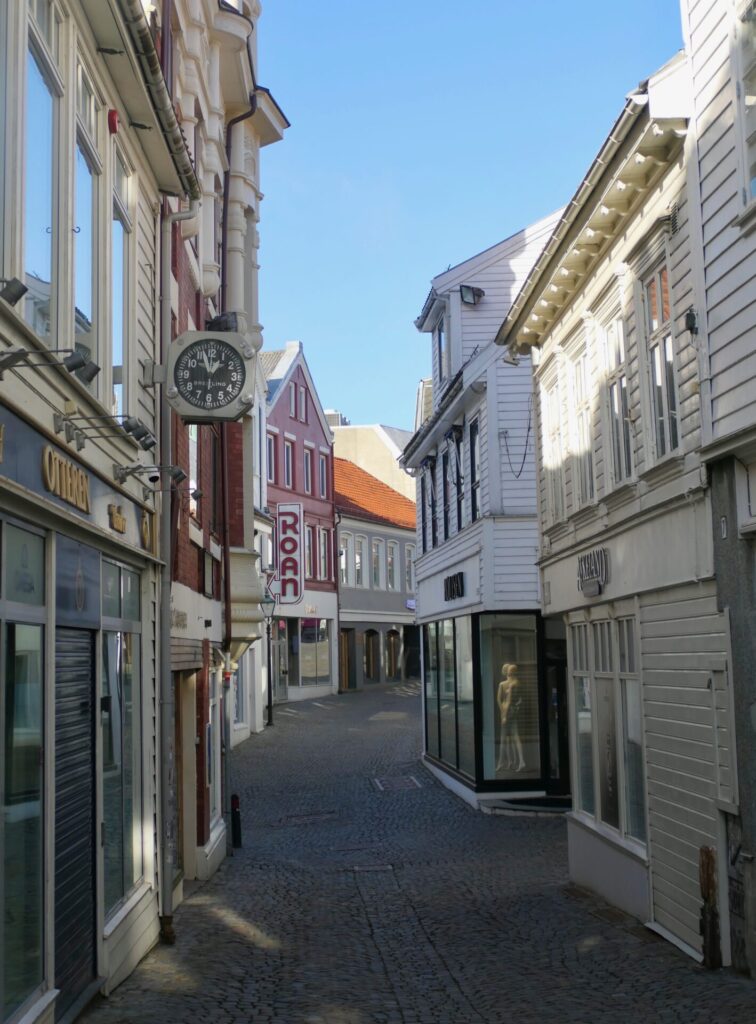
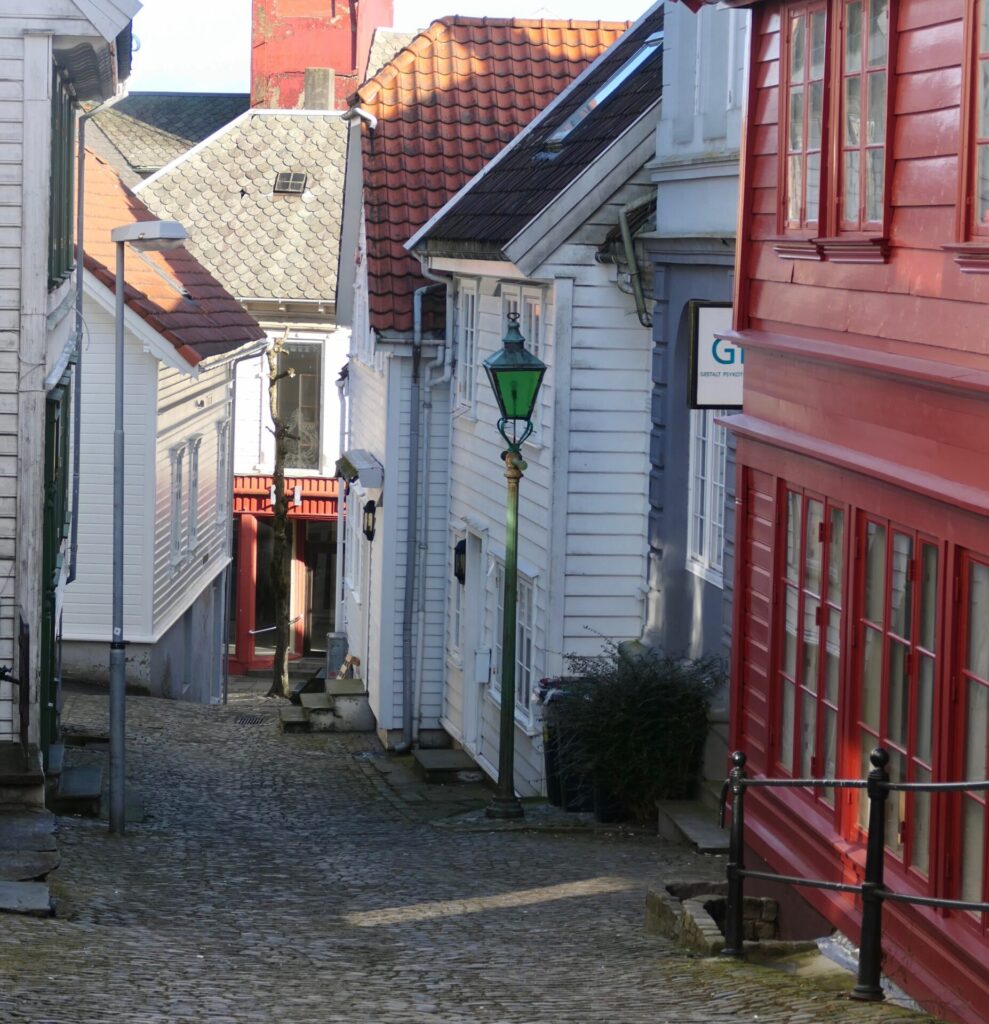
Stavanger is urban and vibrant; you will find plenty of cultural happenings, street art, both local and international shops, tasteful restaurants, stylish bars and cafés – and much more..
Stavanger has in fact some of the best restaurants in NORWAY – and boasts two Michelin-starred restaurants. As the chef at restaurant RE-NAA says – We have the advantage of fresh produce locally – everything – seafood, meats, vegetables and fruit of the highest class is no more than an hour away. There is also a growing interest in the Stavanger region’s local specialities at annual food festivals, with the Stavanger “Gladmat” festival in July as the largest of its kind. At this food festival exhibitors, sellers, outdoor cafes and restaurants are filling up both sides of the harbour.
Nearly all the local restaurants and bars – plus galleries and shops – showcase their talents and specialities for “Gladmat”.

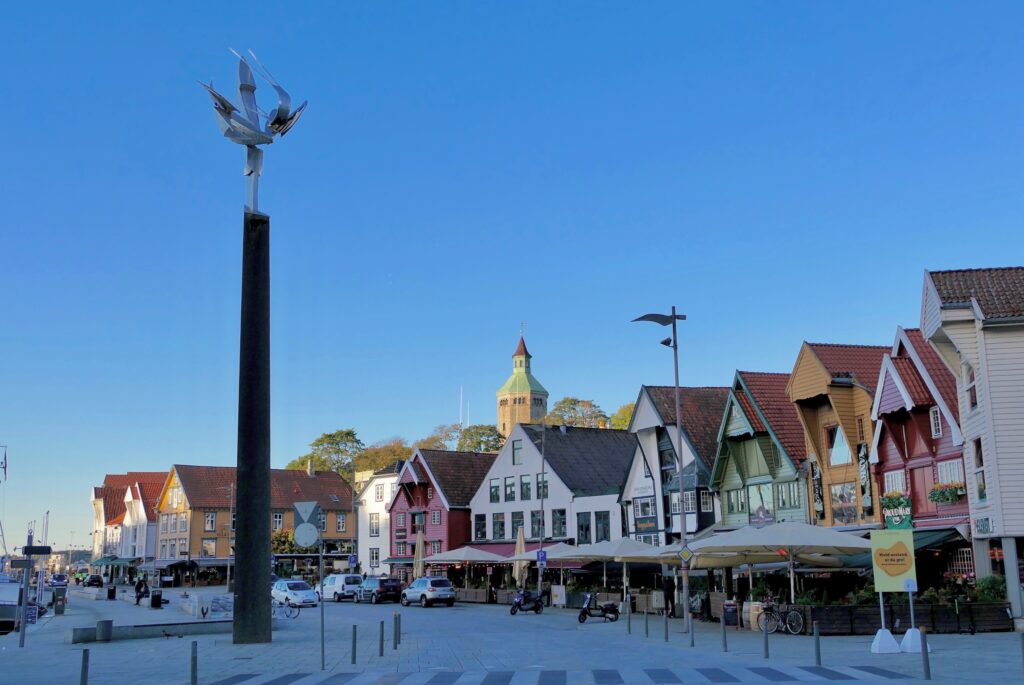
VÅGEN – STAVANGER HARBOUR
Most of the Maritime buildings along the harbour are old wharf houses – built at the end of the 18th century and early 19th century. They were used as salting works for herring, storehouses for salt, logs and other goods, as well as for other industries, and are now converted into offices, restaurants, as well as other businesses.
In the summer this waterfront area comes to life with all its restaurants and bars with outdoor seating. Especially lively when the “Gladmat” festival is held – then the harbour is crowded with people – shown in the photo above.
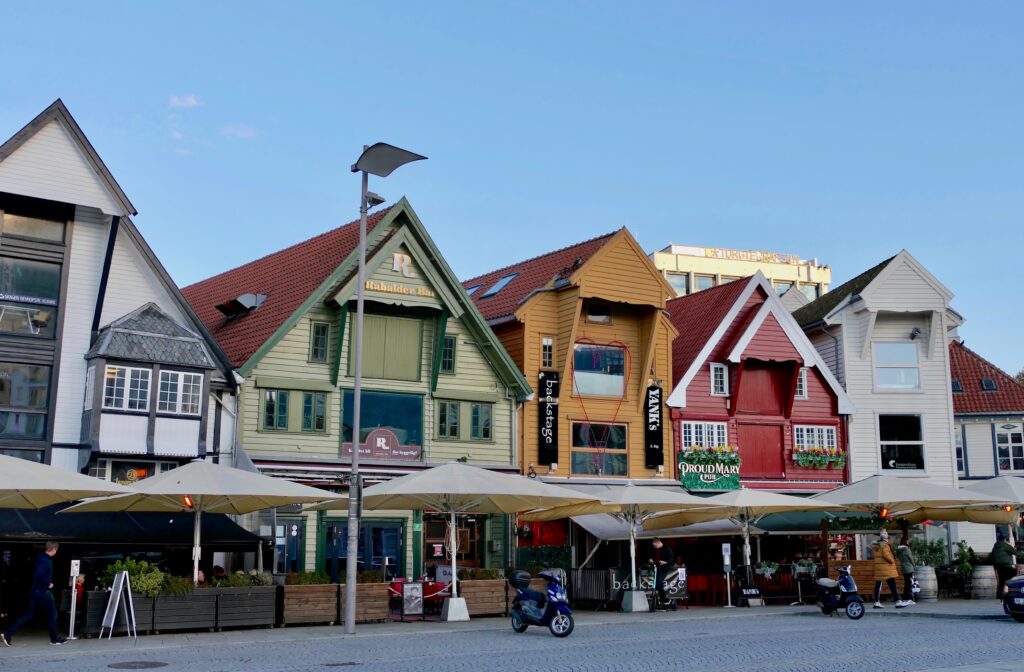
“FARGEGATA” – The Street of Colours
One of the most popular streets in the centre is Øvre Holmegate – better known as “Fargegata” – The Street of Colours. In 2005 a local hairdresser decided he wanted to create a vibrant environment to draw more visitors to his salon and the neighbouring businesses. The houses on either side of the street were painted in different colours, based on a Miami Vice inspired colour scheme suggested by the Scottish artist Craig Flannagan. Each house was given a series of colours for its façade, doors and window frames, designed to harmonize with its neighbours. Over the years cafes, bars and shops were established – providing a draw for the visitors.
Today the street is one of Stavanger’s most visited and most photographed landmarks! #fargegata
These photos above – are from the period that most cafes were closed because of the Coronavirus restriction.
I just visit Fargegata now this July – the cafes and bars are open, and we have much more relaxed conditions. I met this nice couple who happily took a little dance to show their joy over this.
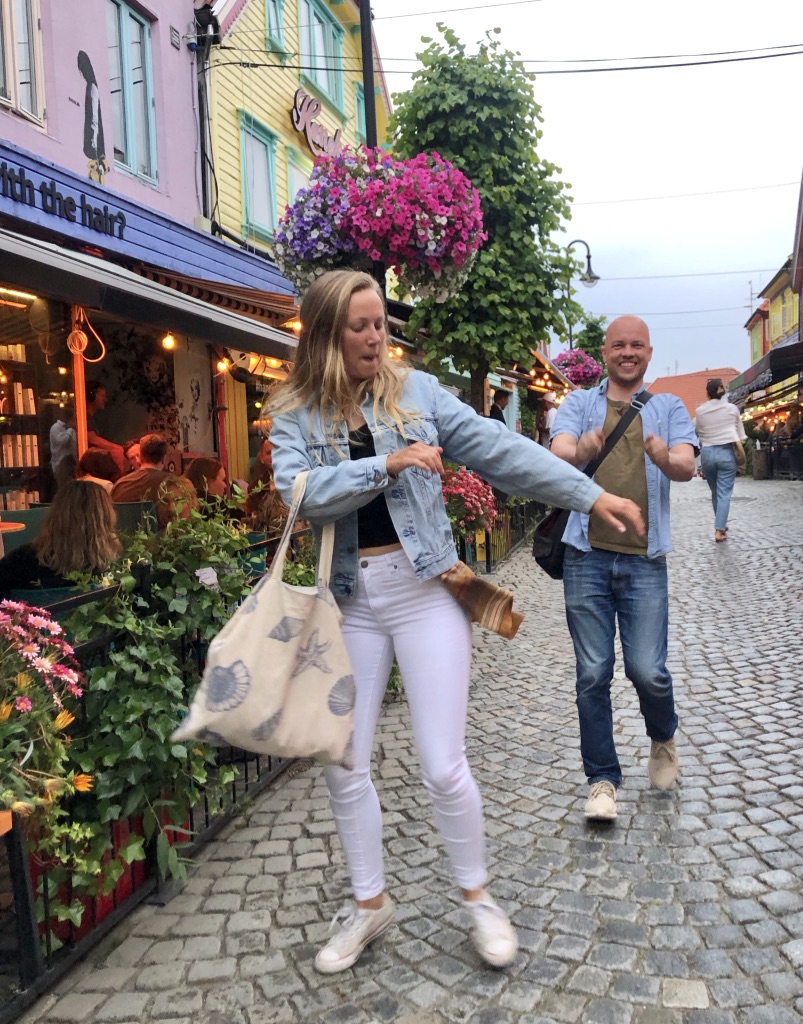
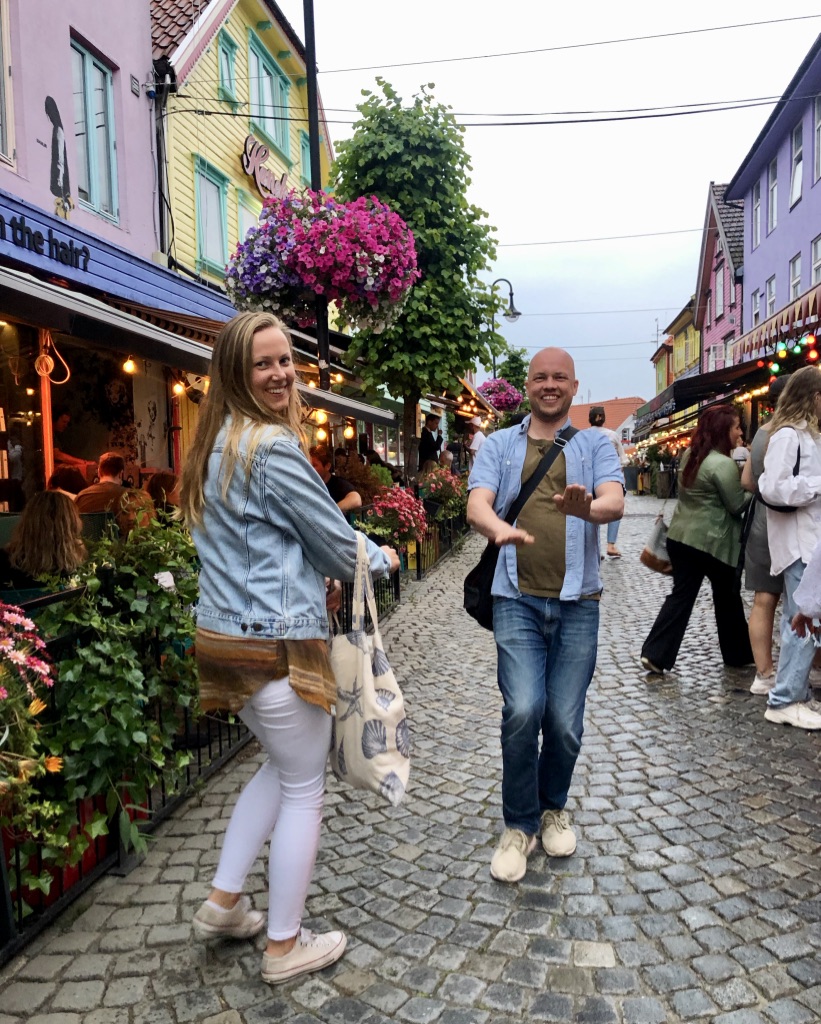
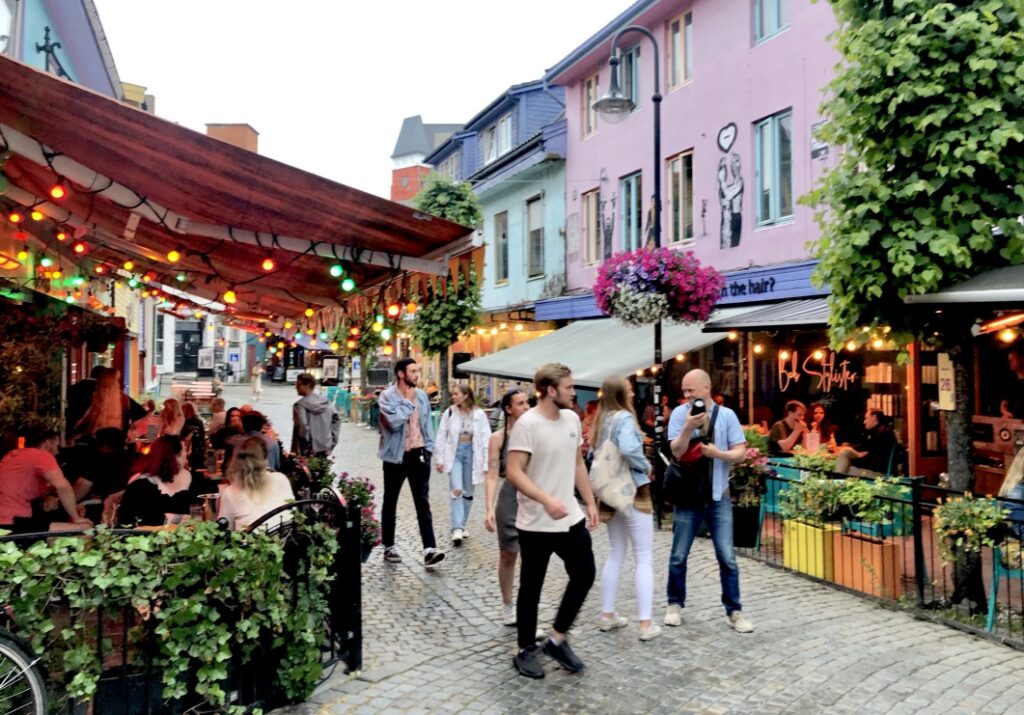
VALBERGTÅRNET – VALBERG TOWER
Along the harbour, you can see the Valberg Tower (Valbergtårnet) that rises above the Seahouses. It is one of the city characteristic landmarks!
This tower was the former observation tower of Stavanger and was the permanent lodging of the watchmen in Stavanger. Among their duties was to alert the people in town when there was a fire.
The tower was constructed from 1850 to 1853 and it was in use as a watchtower until the year 1922. Before the stone tower, we see today was built, there was a wooden octagonal watchtower which was built in 1657.
In the centre of town, by the square in front of the Cathedral and Kongsgård – is the statue of the local poet Alexander Kielland (1849-1906)
Alexander Kielland was one of the “big four” (with Henrik Ibsen, B.M. Bjørnson, and Jonas Lie) of 19th-century Norwegian literature. Kielland belonged to one of the oldest merchant families in Stavanger, and he also became Mayor of Stavanger in 1891.
BYPARKEN- THE CITY PARK
In the heart of the city, you will find Byparken – the City Park – with a small lake -Breiavatnet.
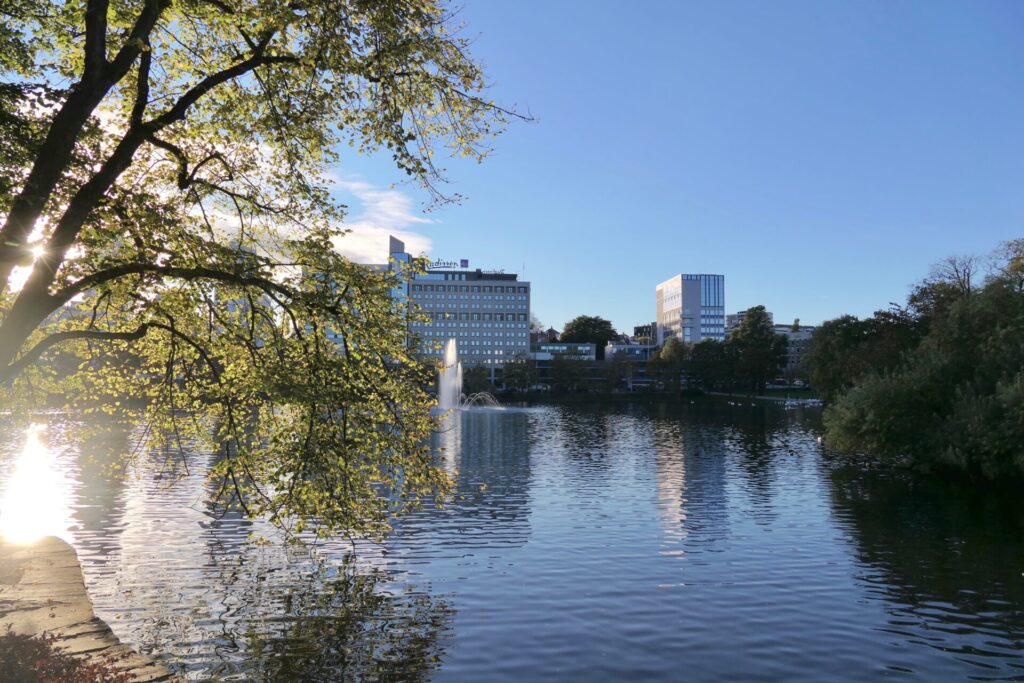
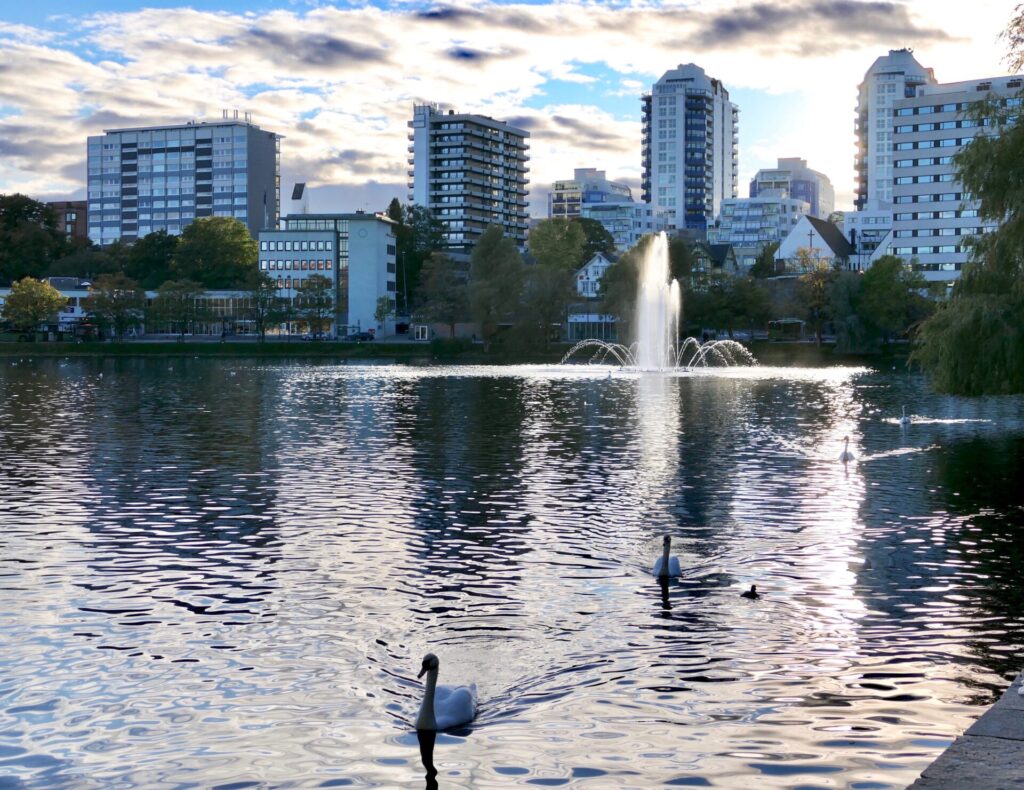
The Stavanger Cathedral – Domkirken and Kongsgård are situated by this park:
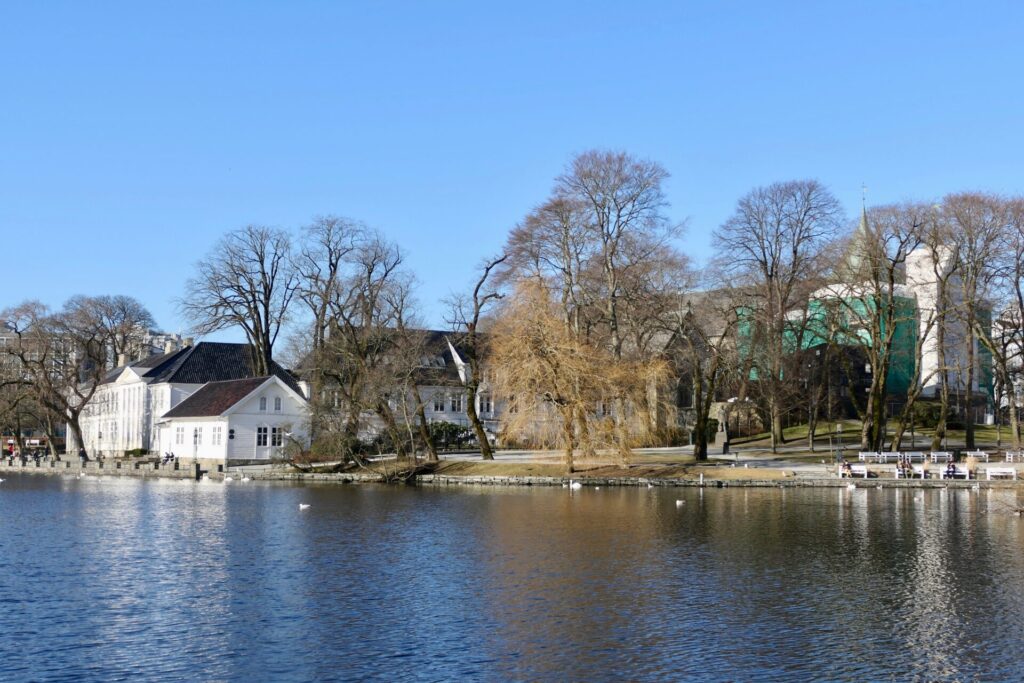
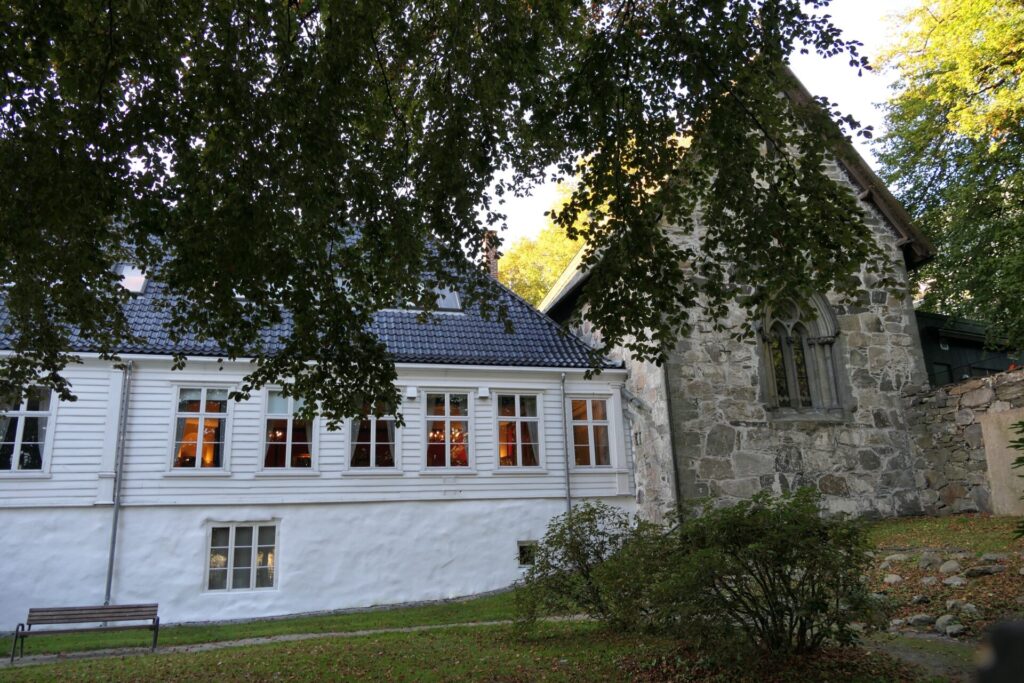
Kongsgård is the old, traditional building of the Stavanger Cathedral School (upper secondary school ).
The main building was built as a bishop’s residence in the Middle Ages. After the Reformation, it has been used as an official residence for nobility and county governors. Kongsgård has been in use as a school since 1826.
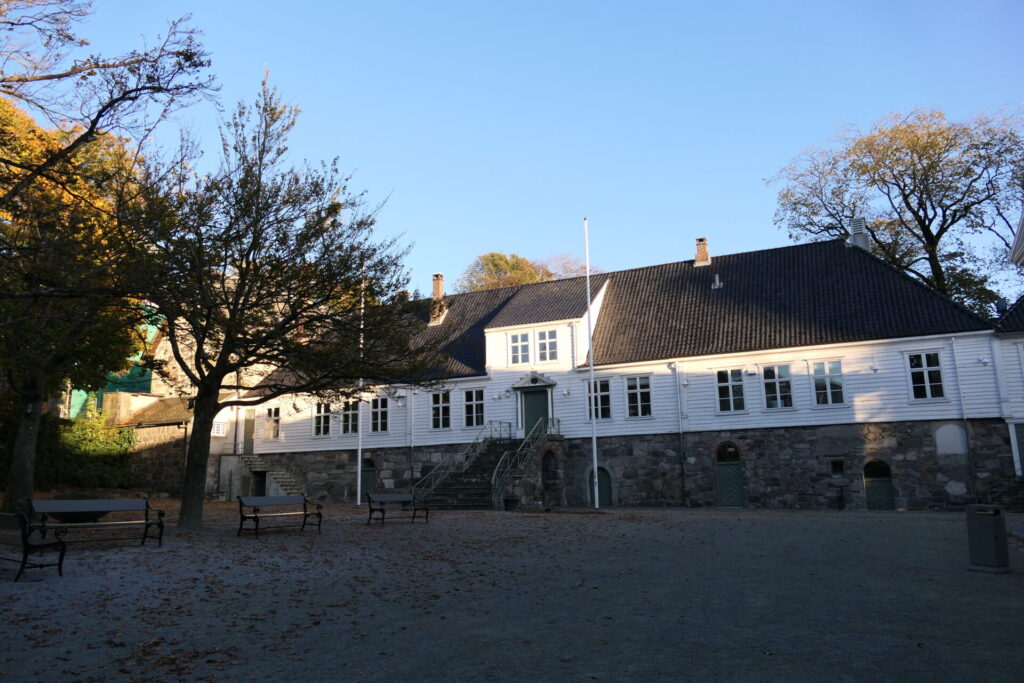
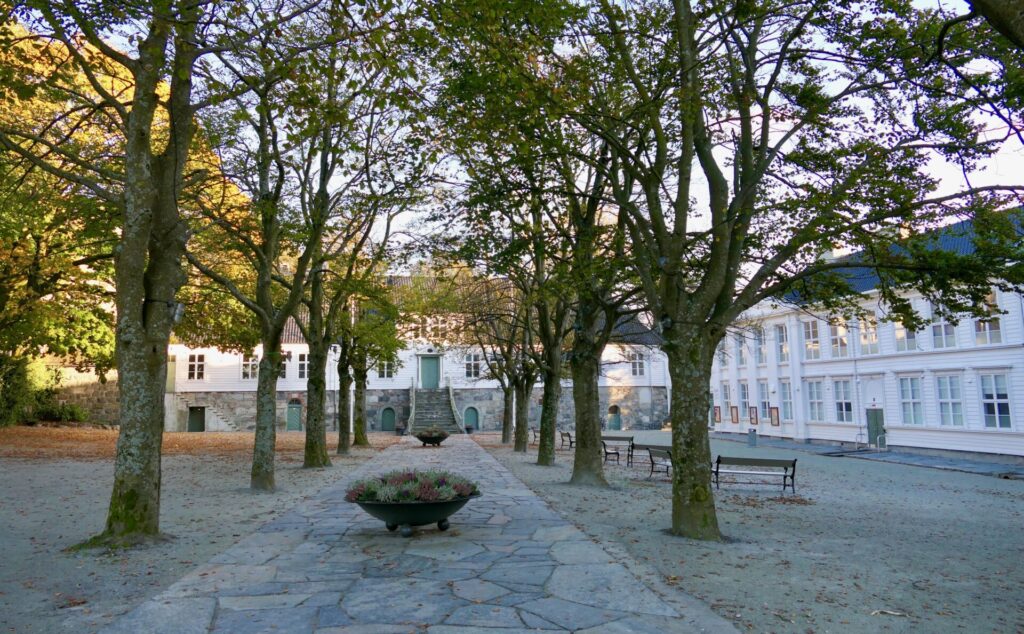
Northwest of the park you will also find Kiellandshagen – named after the local poet Alexander Kielland. His house was situated here.
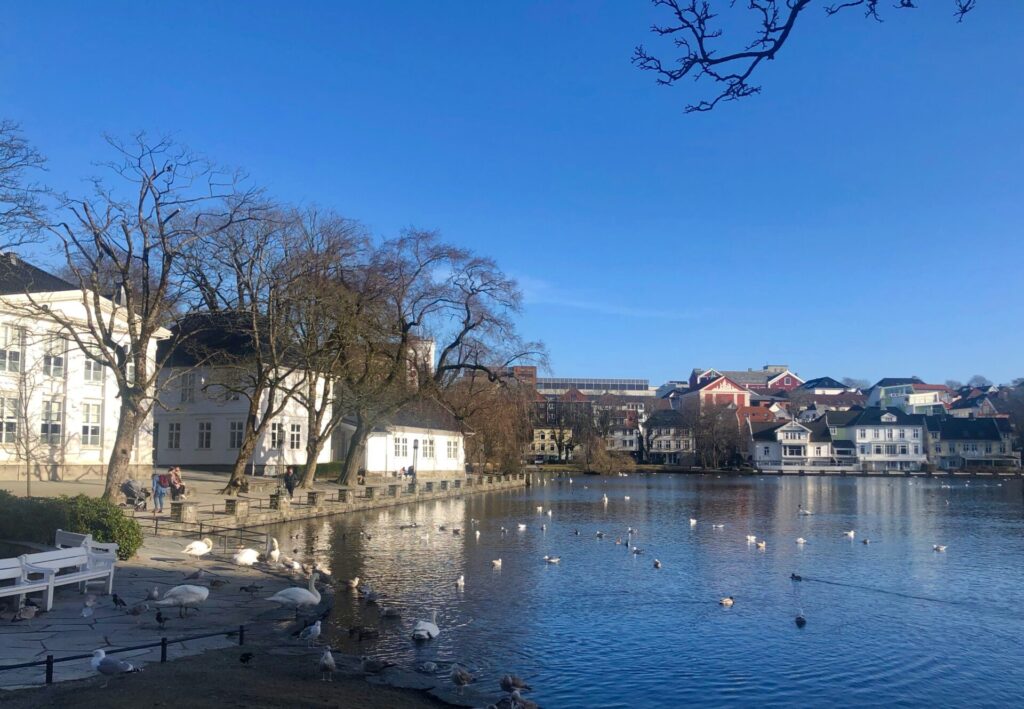
It is also popular to feed the birds in the park – pigeons, sparrows, finches and ducks- and the seagulls are never far away..
ATTRACTIONS:
Gamle Stavanger
More is coming – this autumn. :
(I will announce at a post on my website when a new article is published)
STAVANGER DOMKIRKE
STAVANGER – Streetart
STAVANGER – Broken Column
STAVANGER MUSEUM – with exhibitions on natural history and cultural history, and for the Norwegian Children’s Museum.
Including the buildings of Ledaal (1800)- a manor house that served as the official residence of the King of Norway in Stavanger and the manor Breidablikk (1881).
Both buildings are museums under MUST (MUseum STavanger)
NORWEGIAN PETROLEUM MUSEUM – with exhibitions that show how offshore operations have become Norway’s most important industry, and give you experiences of this activity.
The museum has varied activities for children and adults, interactive installations and films.
HAFRSFJORD -with the monument “Sverd i fell”(Swords in rock)
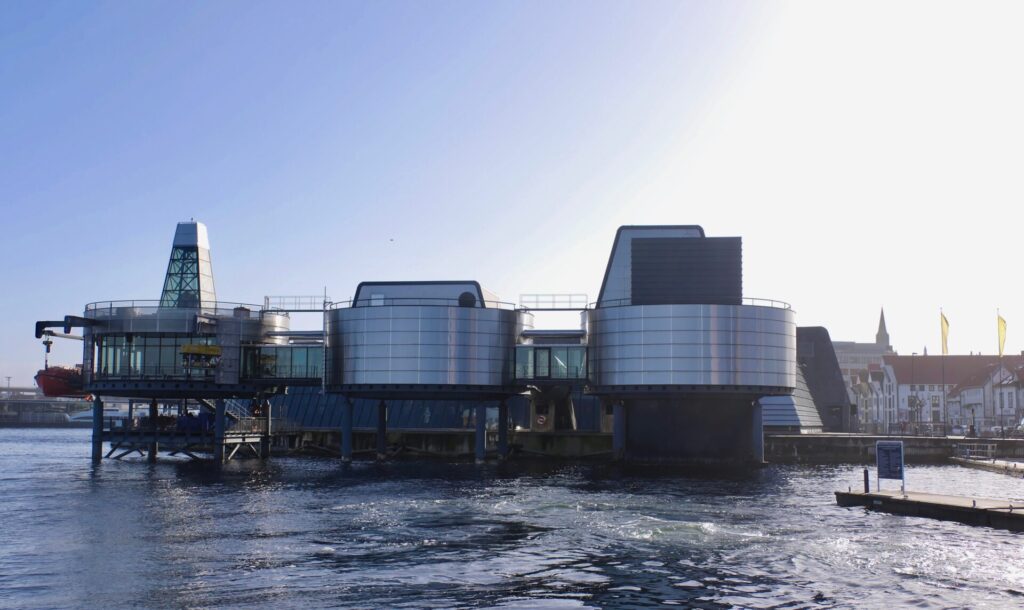
STAVANGER SURROUNDINGS:
Within just an hour’s drive from Stavanger you can encounter all the different landscapes that Norway is known for – fjords – mountains – white beaches, Stavanger has grown into a popular tourist destination.
JÆREN :
RYFYLKE

